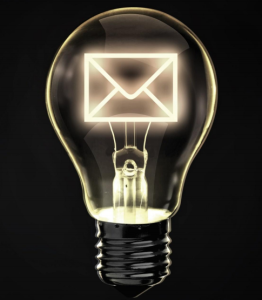 So you finally want to start a newsletter for your local business? It’s a good idea for local businesses. In fact, email newsletters can help boost your sales dramatically but most small business owners simply overlook its significance. Email open rates are still very high, making an email newsletter a solid investment – if you do it right.
So you finally want to start a newsletter for your local business? It’s a good idea for local businesses. In fact, email newsletters can help boost your sales dramatically but most small business owners simply overlook its significance. Email open rates are still very high, making an email newsletter a solid investment – if you do it right.
However, a lot of companies start newsletters without really thinking about what they want to accomplish. Don’t be one of them. Follow the advice here, and you can use your newsletter to increase your revenue.
Find a Focus
The first thing you need to do is to avoid the biggest mistake companies make when putting together a newsletter: they try to cover everything. A traditional marketing email is a relatively simple beast. It covers a single topic, and concludes with a single call to action. It’s quick to write, easy to read, and if you do it well, it can convert like crazy.
The problem with the average newsletter is that it tries to be all things to all people. If you want people to read your newsletter, you need to give them a compelling reason to do so. Pick one vertical and stick to that. You can always segment newsletters for other aspects of your business if you want to.
Information First, Sales Second
The second thing to keep in mind is that you are writing a newsletter, not a sales letter. People subscribe to a newsletter to get
information, not to get a hard-core sales pitch delivered to their inbox. (Of course in many cases, they also went to hear about special promotions and deals, but we’ll get to that later.)
The ratio of information to sales pitch should be about nine to one in your newsletter. That means that 90% of the content you include is about educating and entertaining your subscribers. It’s fine to include a call to action at the end – you should do so – but if you spend all your time selling, you’re going to end up with a huge unsubscribe rate.
The benefit of leading with value for your subscribers is that it takes advantage of the psychological principle of reciprocity. It’s the same approach used by a lot of internet marketers who give away a freebie like an eBook or a list of tips to get people to sign up for their mailing lists. When you give a subscriber something for nothing, you create a sense of obligation in them. You have provided them with something valuable, and they feel they owe you.
Keep it Short, Sweet, and Simple
The third thing to remember when putting together your newsletter is that you want the content to come in small, easily-digestible chunks. It should be arranged in a single column with a few attractive images. If you want to include a long piece of content, embed a link back to your blog or website rather than copying the whole text into your email.
You should also choose a few relevant and dynamic images to illustrate your content. You don’t want to overdo it with pictures and video, so keep in mind that everything you add has the potential to slow a subscriber down when they scroll through the newsletter. Make sure to use alt image tags, too, so that if the pictures don’t display your subscribers will still know what they are.
Simplicity is also key for mobile search.
 Add Video – and Mention It in Your Subject Line
Add Video – and Mention It in Your Subject Line
Video is hugely popular, and recent research shows that simply including the word “video” in the subject line of an email increases open rates by 19%. If videos are already part of your marketing mix, then you should include them in your newsletter. If not, you might think about adding them. Even a short, 30-second video can add a lot of appeal.
Write Killer Subject Lines
Speaking of subject lines, make sure yours are clear (you should state that you’re including your newsletter) and intriguing. You want to give subscribers a compelling reason to open your newsletter instead of ignoring it. For example, a local clothing store might try something like this:
April Newsletter: Spring Scarves and a Special Coupon for You!
That’s just one possibility, but you might try including a compelling line from a story, a mention of a product, or a detail about a promotion. However, make sure to stay away from clickbait headlines that have nothing to do with your newsletter. Your subscribers won’t thank you if they open your newsletter expecting something you promised in the subject line and don’t find it.
Include a Single Call to Action
It might be tempting to include multiple calls to action, but remember that 80/20 ratio and stick with one. You might offer subscribers a chance to click your CTA (call to action) to get a special coupon or discount code. Alternatively, you might link back to your online store, or give customers an opportunity to buy tickets to a special event. There’s really no limit to what you can do, but make sure that your call to action is relevant to your newsletter for the best results.
For local business owners, it’s also a good idea to offer customers the opportunity of downloading coupons or discount codes onto their mobile phones or mobile wallets.
Test, Test, Test
The final thing I want to mention is the importance of testing. If you’re using an email automation service like MailChimp or Constant Contact, it’s very easy to test multiple versions of your headlines, colors, images, or content. Just because it’s a newsletter doesn’t mean you can’t benefit from studying variations in open rates and click-through rates. The important thing to remember is that you should always test one option at a time. Testing more than one muddies the water, making it impossible for you to identify what’s working and what’s not.
Last but not least, make sure that you offer an easy-to-see, easy-to-use way for subscribers to opt out of getting your newsletter. No customer enjoys the feeling of trying to unsubscribe and not being able to do so. Of course you would prefer that they stay subscribed, but you don’t want to aggravate them to the point where you lose them as customers. As long as you put your subscribers’ needs before your own, you can create a great newsletter that will help you grow your business.
